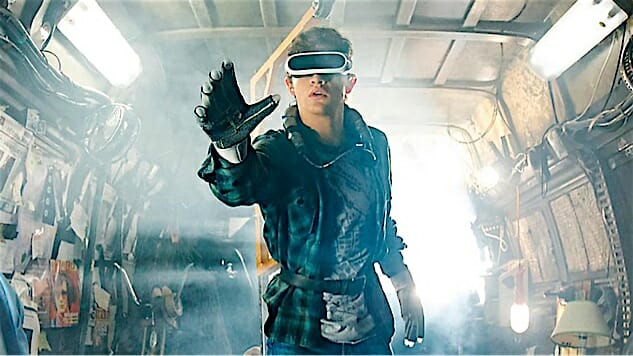Ready Player One

1. I shudder to think what Ready Player One would have been like if had been directed by anyone other than Steven Spielberg. The novel the movie is based on is the infamously dopey videogame geek fantasy—only gamers can save the world!—that was harmless and derivative in 2011 but seems oddly weaponized in a Gamergate age, and what someone like, say, Michael Bay or Max Landis would have done with the book is more than a little bit terrifying. Spielberg is the perfect guy to direct this, maybe the only one, because he not only has a direct connection to the relentless ’80s nostalgia throughout—one of the most fun aspects of the film is spotting Spielberg’s own Easter eggs—but he also has the same gentle, overly earnest tone he’s had his whole career. There are times that earnestness can turn cloying and even toxic. But here, it’s exactly the antidote the rest of these needs. The movie is still silly and empty. But Spielberg, as always, makes it feel good going down.
2. Our hero is Wade Watts (Tye Sheridan), who survived some sort of apocalypse in the 2020s—expecting one to come that late almost seems optimistic these days—and now lives in the “stacks” in Columbus, Ohio, basically a future version of a trailer park. Like everyone else, he escapes from his grim reality by visiting “the Oasis,” a virtual reality world where you are represented only by your avatar and you can visit any virtual landscape you wish, collecting “coins” and trying not to “zero out” and have to start the “game” over. The Oasis was invented by a man named Halliday (Mark Rylance, wonderfully mumbly as ever) who, when he died, revealed that he had hidden three keys as Easter eggs in the game, with the person who finds them first awarded with control of his company and the Oasis, and thus the future. This leads an evil corporation called IOI, headed by an evil CEO played by a reliably shady Ben Mendlesohn, to invest all their resources in trying to win the game while Wade (called “Parzival” in the online world) and a group of rebel gamers try to stop them to save the world.
3. That’s a lot of plot, and we haven’t even got into the killer drones and the virtual chopshops and T.J. Miller’s bounty hunter character. Again, in anyone else’s hands, the explanations of this world, along with the mostly hackneyed plot construction, would be deadly; this story basically begs you to get bogged down in its dumb details. But Spielberg just keeps it zippily zooming along like he does with everything, whether it’s a dinosaur chasing a jeep (which this film giddly references), Indiana Jones hanging onto the hood of a car or Ben Bradlee racing across the newsroom. It is pretty remarkable, all told, that this 71-year-old man still has such dexterity and kinetic energy: The movie has the gusto of a first film, let alone a wizened old master cranking out his 29th studio venture. The action sequences are clear and well-thought-out, packed full of visual detail and all sorts of pop culture references but never cluttered or overwhelming; he remains in total and absolute command of his medium in every way. There is a sense of play that is somehow still there all these years later. Like Halliday—a character Spielberg obviously adores and identifies with—he’s just a kid playing with all these wonderful toys.